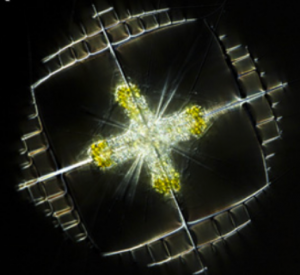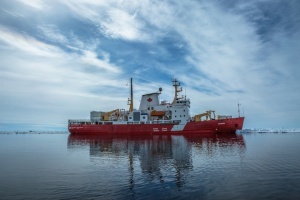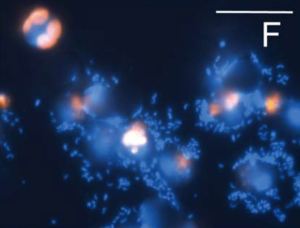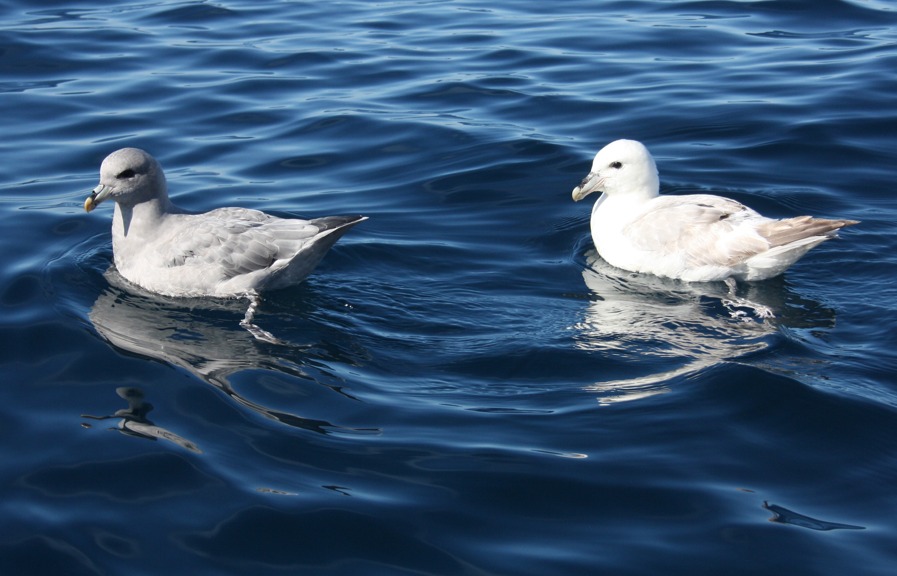There is a sweet, sticky seafood smell in the crisp Arctic air that makes me happy. It turns my neurons on every morning, when I bend over the port railing of the Amundsen on my way to the laboratory. This smell emanates from the sea surface and is called DMS, shorthand for dimethyl sulfide. I admit that sometimes, in the intimacy of the laboratory, I open a tiny bottle of pure DMS and smell it to find immediate comfort. And as you will see, I am not the only one.
But let’s begin from the beginning. Many million years ago, some microbes that inhabited salty environments evolved the capacity to make an extremely useful molecule called DMSP (whose real name is so long that I won’t even suggest that you remember it). It helped them cope with salt stress, ultraviolet radiation and even with the freezing temperatures of polar environments. DMSP turned out to be so useful and energy rich that everyone wanted to make it or share it with its neighbors. This entailed countless planktonic love stories. For example, some dinoflagellates, a group of marine phytoplankton, learned to share it with corals and eventually they formed a stable couple, say symbiosis. Corals even learned how to make DMSP, perhaps as a result of the convergence that occurs in some long-lasting marriages. Also, the delicate Acantharians (protozoans distinguished by their beautiful skeletons) convinced some DMSP-producing microalgae to live within their elegant glass shields in exchange for their precious DMSP. This tale, however, is not only about love. Many marine predators evolved chemical sensors to detect DMSP, allowing them to find prey more efficiently.

At this point you may wonder what the relationship between DMSP and DMS is. Well, even the most efficient systems generate waste, and DMS seems to be the waste product of DMSP in marine food webs. Algal cells can generate DMS to get rid of the excess sulfur contained in DMSP, or by other unknown reasons. In addition, in almost every interaction between marine organisms some DMSP is lost and taken up by bacteria, which degrade a small fraction of it into DMS. Yet, DMS is a particular waste product. Since it is a gas, it can accumulate at the sea surface and be emitted to the atmosphere. This is well known by marine birds like fulmars, as well as penguins, and even seals, which follow this characteristic flavor to detect where food is (see front picture: Potential marine DMS smellers Procellariiforms). This humble waste product, moreover, turns out to be the main natural source of sulfur to the atmosphere. Atmospheric sulfur is important because it forms aerosol particles that can make clouds brighter, shading the Earth’s surface and its living organisms.

In the Green Edge cruise we are measuring DMS and DMSP production (as well as other related chemical compounds) during the ice edge phytoplankton bloom in the Arctic Baffin Bay. Luckily enough, we hit some blooms of the phytoplankton Phaeocystis, an extraordinary DMS producer. But you do not need to be in Baffin Bay, not even to live by the sea, to know how DMS smells. The next time you eat some seafood or drink some wine or beer (yes, they contain DMS too!), you will perhaps remember this tale of planktonic love and food affairs, so intertwined, and their implications for the Earth’s climate.



